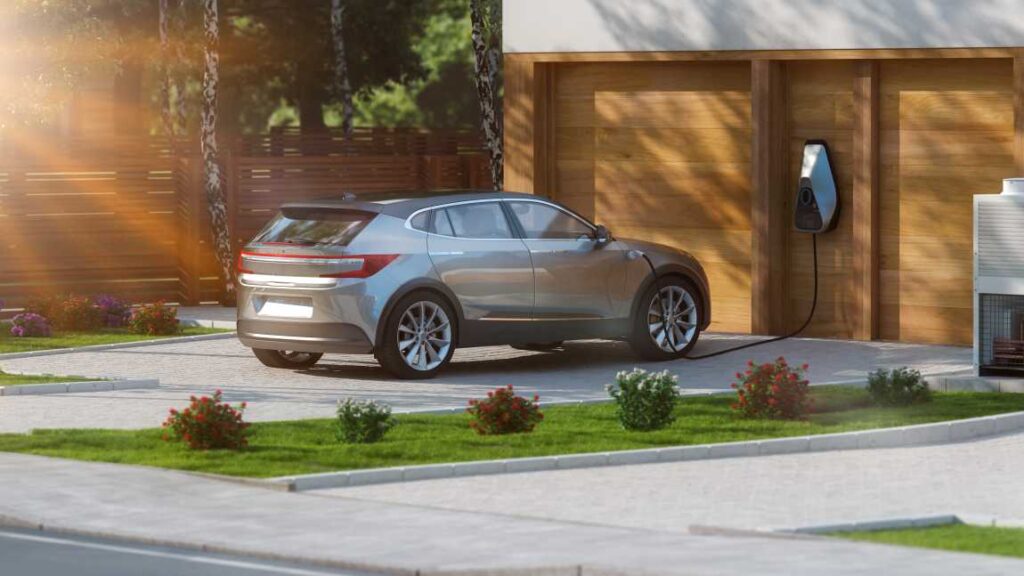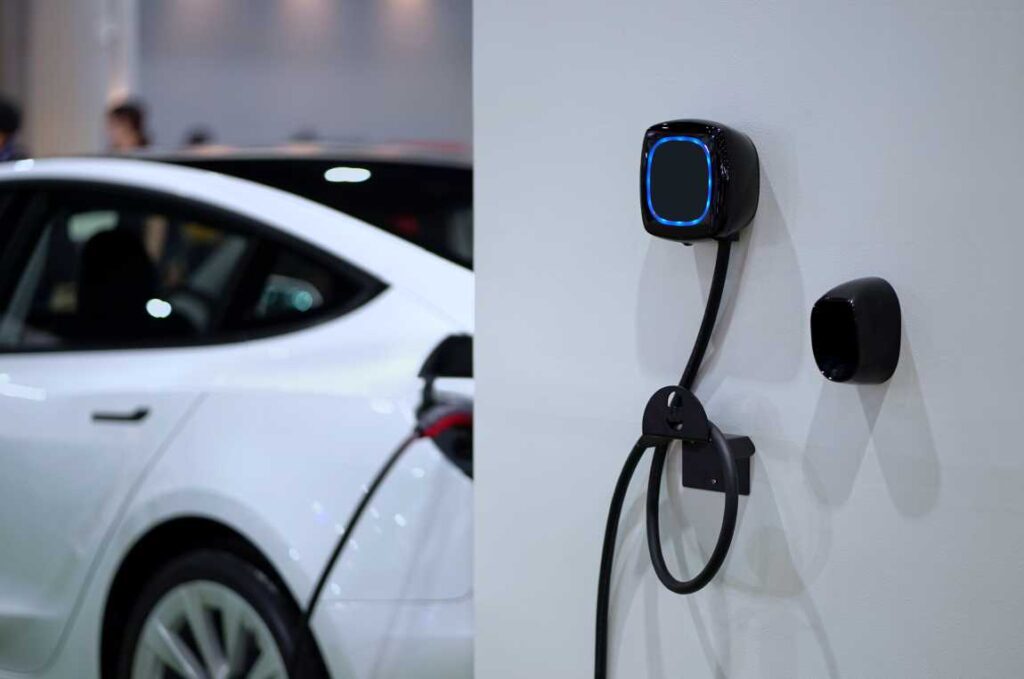Everyone knows that you have to plug in your electric vehicle to charge it and get on the road. But what if, in return, your EV could provide power to your home or elsewhere? New technology, called bidirectional charging or V2G, V2X, V2L or V2H, is making that a reality. This could be a game changer for areas with unreliable power sources, or during times of power outages or natural disasters.
How it Works
The new V2G technology stands for “vehicle-to-grid”, meaning that the energy created by the EV’s battery is pushed back into the electrical grid to provide power elsewhere. In super simple terms, the battery both gives and takes in energy. A V2G charger is needed for this to happen (as opposed to the current one-directional chargers used to power EVs), and some companies like Wallbox have a product out there and are working on new technology. There is also V2L charging, or “vehicle to load”, where you can plug something directly into a vehicle’s battery like a phone and get power. Lastly, there is V2H, which provides power directly to a home rather than putting it into an entire power grid.
Benefits of Bidirectional Charging
Some hail this bidirectional charging technology as a way to avoid blackouts and power disruptions in times of high power usage or natural disasters. EVs with V2G technology coming out in 2022 and beyond boast the capability of connecting the vehicle’s battery to a home’s electrical system to provide power for up to three days. The power is also more readily available than renewable sources like wind and solar. As EVs become more common, some are worried about the strain that charging them could put on the electrical grid. However, some in the industry said that bidirectional charging could be part of the solution, as EVs provide power as well.
There may also be a monetary benefit to those who have bidirectional charging units in their home. They will save money by charging their vehicle rather than filling it up with gas, and also can sell energy that their EV produces, but they don’t need.

Which EVs Have V2G Technology
While there are more and more EVs entering the market, not all of them have this bidirectional charging technology. EVs including the Nissan Leaf, Nissan e-NV200 and Hyundai Ioniq 5 already have bidirectional charging capabilities. Forthcoming EV’s with V2G technology include the Ford F-150 Lightning, Mitsubishi Outlander, all Teslas and Volkswagen ID. models. While the technology is becoming more prevalent in vehicles, the hardware to harness EV power for use in homes or the wider electrical grid lags behind.
How to Get V2G Power
One problem in the US is the lack of companies making the hardware that allows for EV owners to use V2G and bidirectional charging to power their house. Ford, for example, is trying to solve that problem by working with a solar power storage company, Sunrun, to provide the hardware for customers who want it in their homes. You can also buy a Wallbox Quasar unit, which they tout as “the world’s first bidirectional charger” for the home. As demand for EVs with bidirectional charging capabilities grows, it will become even easier to have a charger installed at home and start reaping the benefits.
